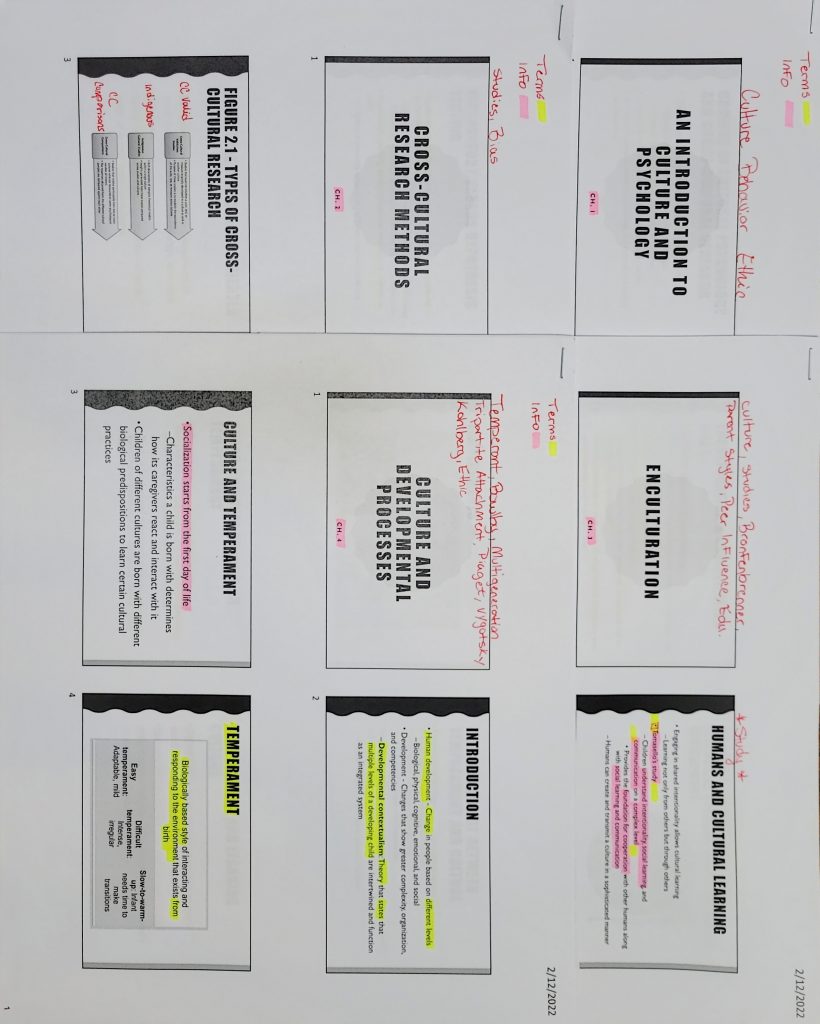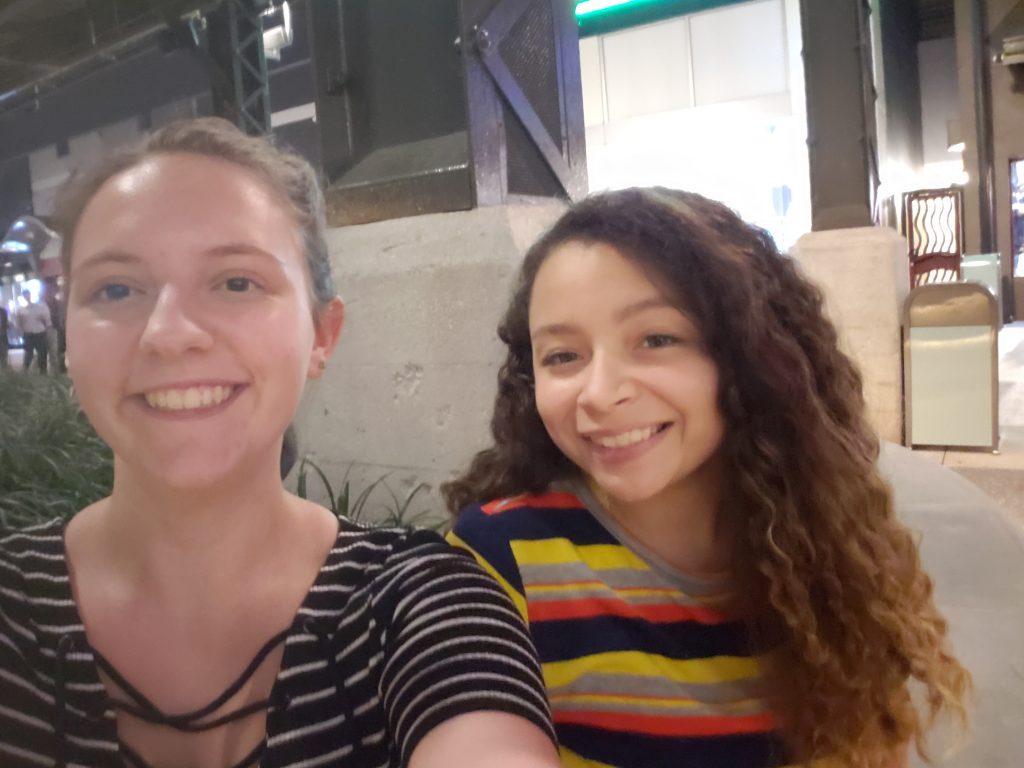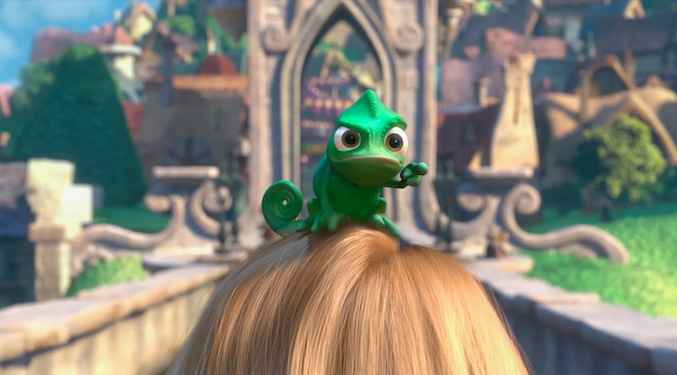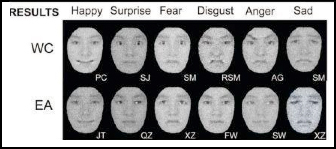For the NEO personality test we are tested in five areas to understand ourselves. The test counts points to give a score on major dimensions of personality: Openness, Conscientiousness, Agreeableness, Extraversion, and Neuroticism.
For Neuroticism(N) I feel as though I am generally calm and can deal with stress which is the average response. The test results place me in the high range which means I am under the classification of being sensitive, emotional, and feeling upset. I am not entirely against the findings because on the inside when it comes to homework, but I am on the Average scale when I am at work.
For Extraversion(E) I do disagree with their conclusions of the test. I am an introvert, reserved and serious; prefer to be alone or with a few close friends which is under the lower column. I truly only deal with my two best friends and close family (parents/sibling) when I am not at work. I am only goofy or silly when around that small group in my life. The test places me in the average column which states moderate enthusiasm and enjoy others.
External vs Internal
These cluster of words describe both sides of me. With being management, you have to be stern in some aspect and be serious at times. As my coworkers say, “there is a work Lauren and a true Lauren”. To describe work me would be blunt, bold, and stubborn. When I am off from work, I am more; goofy, loving, quiet, and shy. For both sides of me I am aggressive, supportive, passionate, supportive, and caring. All of these describe my true self, I care about my employees and the animals. I am supportive to my workers to help them grow and we are all passionate about our work. I am very stern and blunt when it comes to my position and if everyone works hard at their job then I am goofy and loving when I do not have to be all uptight.
For the remaining three Openness(O), Agreeableness(A), and Conscientiousness(C) I do agree with; the test put me in the average column which is where my personality lies. Openness: practical but willing to consider new ways of doing things and seek a balance of old and new ways. Agreeableness: generally warm, trusting and agreeable but also stubborn and competitive.

Weekly Blog #4
From this process I learned that I am not the best at blending notes. Reading the text and trying to understand it and then tweaking our PowerPoint notes to form a Chapter packet was not easy. I did make notes for the chapters about topics or people involved. Since I have taken several Psychology classes most of the people mentioned in our notes were previously learned. With that I was able to glance at my heading notes I made and knew which chapters to study more than the others. Reviewing wise, ever since I was in middle school I learned I have to start studying only two days before a test. If I start to study before the two days, the knowledge is not retained as well. The feedback is beneficial because it can help me learn more about what I missed so it can enhance my note taking. This will also help me find my strong and weak topics in the course.

Weekly Blog #5
Write 10 different statements in answering the question, “Who am I”?
For my 10 statements of who I am are very simple since I am a simple person. Personally, I am quite (1)stubborn since I was young just like my father. Stuborness comes in small packages as I was told since I am only (2)five feet tall. Even though I am strong minded I am an (3)introvert and quite shy. As many elderly people ask where I go to school I am an (4)Old Dominion University student and I am (5)majoring in Psychology and Human Services. Even though some say I do not look it, (6) I am biracial of Black and White. I am (7)twenty-two years of age even though I am told I look sixteen. Some facts about me; I am the proud (8)owner of a Mainecoon cat. (9)I am allergic to all citrus fruits, pineapple, kiwi, papaya, and dragon fruit. To top it all of I am very (10) protective over my family and friends.
Use the following questions in your assessment:
Which statements do you think are associated with the dimension of ‘independent construal of self”? For example, you will say numbers 2, 4, and 6 are associated with…
To me numbers #1 and #3 are associated with the independent construal of self. Stubbornness and being an Introvert are personal traits.
Which statements do you think are associated with the dimension of ‘interdependent construal of self”? For example, you will say numbers 3, 5, and 7 are associated with…
To me number #10 is associated with the dimension of interdependent construal of self. Being protective over my family and friends involve others.
Based on your answers to the aforementioned questions, do you think you are more independent or more interdependent?
To me I feel highly independent and do not need others to be myself. I do love and am protective of them but I do feel as though my day to day is independent.
Describe the English proverbs (short expressions of popular wisdom) which reflect either “independent” or “interdependent” construal of self. For example:
Independent self – “Be unique”
Interdependent self – “Occupy and play one’s assigned role”
Which was easier for you to think of: the proverbs that reflect “independent self” or “interdependent self”? Can you think of any reasons for your tendency?
Too many cooks spoil the broth. Independent
Too many inputs may ruin the plans.
Don’t judge a book by its cover. Interdependent
For this you must get to know individuals and become linked with them. You cannot judge them by looking externally you must look internally which is through bonding.
Many hands make light work. Interdependent
Working together and having a teamwork bond is important so that tasks are easily on all as a group.

Too many cooks spoil the broth.
Blog #6
Academically Satisfy
Autonomy: Individuals need to feel in control of their own life, behaviors, and goals. (Choice)
With autonomy students are able to choose their career path by obtaining a degree of their choice through a university.
For my career choice I would like to go into psychology fields such as a psychologist, counselor, or therapists. With that I am obtaining a degree in psychology and human service because they both go hand and hand. It is also handy to have a back-up degree in my opinion. If both do not work out then I plan to go back to school to be a geneticist. All of these careers and choices are mind and are not influenced by any person because it is a personal choice.
Competence: Individuals need to gain mastery and control their life and environment. (Essentials in life) With competence students gain their mastery of an academic subject once they graduate. On the environmental aspect we are given the right to now go to college either in person or via online. This gives many the opportunity to further their education in their own time, location, and speed.
For my environmental aspect I chose to complete my degree via online due to my busy schedule and location. I am only an hour away from campus but there is heavy traffic and bridge and tunnel closings. I also help run a business and work over 50hr weeks whether I am in the building or on travel. Mastery wise for this section I have climbed the ladder over my 11 years of working experience to manager position. Educational wise I have completed business courses with different dog food companies and have almost completed my certification for dog/cat nutrition.
Relatedness: Individuals need to experience a sense of belonging with others and create a caring bond. (Belonging with others) Belonging wise can include things such as clubs, sport teams, or with classmates; these can become long-term friendships.
In high school I was on a tennis team, and we were all close and cheering each other on and making sure everyone was warm, hair back, and hydrated. I am still friends with many of the girls four years later and that is how I met my best friend. College wise even when I was in community college in person, I knew people, but we were never really close. Being at ODU online there are not many personal options like face to face making friendly connections. My best friend and I discuss and plan our semesters together even though she goes to Florida Tech, we always make time for each other if she needs help with assignments.

Reflection:
Out of the three needs I will say that Relatedness is my main one I want to represent. My best friend Abby means the world to me. We are basically sisters, and both of our families are just as caring towards each of us. She keeps me positive and helps me understand my work if I cannot figure it out or just be there as a supportive factor. Her support has kept me in school because she motivates me to be a better person in all the means of the world. Being that we do not see each other a lot due to schedules when she is home our picture is from 2019.
Blog #7
Discuss your thoughts about whether fairy tales reflect ‘a shared set of cultural norms and values.
–From what I have seen is that in many of the princess fairy tales in the earlier years such as Snow White, Sleeping Beauty, and Cinderella they needed men to save them and play more femine parts. New norms today are stretching for independence like Moana, Brave, and Tiana. As women’s roles are evolving the princess fairy tales are too.
Describe, and give examples of, the potential impact of the main character’s modeling of more egalitarian roles on young audiences.
“Belle, rather than her father, is the inventor (she applies this trade to the domestic chore of laundry through the invention of a rudimentary washing machine), her bookish quality is expanded to include a scene of her teaching a young girl to read (an act met with hostility against female literacy), and her father describes her as a woman ahead of her time when she voices concern that the townspeople find her odd.”
–This alone shows young girls that they can accomplish anything they set their minds to and that they can reach past the barriers of gender norms. Belle takes control of her own life and does not need any man to do tasks for her. She is inventive and she gives that drive to the young audience.
Provide an example of a movie or novel in which the main character, who you identified with, positively influenced you in some way.
– I feel in tune with Rapunzel in Tangled to stay on the princess theme. She is independent, driven, tough, and artistic. She fends for herself fighting with a frying pan and can be assertive in what she wants. Plus, she has a pet chameleon and that is different from “cuddly pets”. I have more reptile pets than feather or fluffy pets. They have just as much personality as Pascal (her Chameleon) and I like that both her and him are different from other princesses.

Blog #8
What I found interesting about the beginning of the document was that faces are used as an instrument for communication starting in infancy. “As early as 9 minutes after birth, infants prefer to look at faces rather than objects, and as young as 12 days old, babies have the ability to imitate facial gestures.” To me that is fascinating and displays our curiosity as human-beings. I knew babies liked to look at faces and study them for long periods of time.
The first comparison is the rate of emotion between Americans and Japanese. Americans have been shown to rate the same expressions of happiness, sadness and surprise more intensely compared to the Japanese. With the participants I have learned from other courses that different cultures have different ways of dealing with and showing emotions. I learned in the past that both Hispanic and Japanese cultures hide external emotions more and keep their personal life private compared to most Americans. “American participants, for instance, gave higher ratings to the external appearance of emotions. The Japanese participants, on the other hand, assigned higher ratings to internal experiences of emotions.”
Culture-specific display rules are learned during childhood. “A classical study from the 1970s that demonstrates cross-cultural differences in display rules involved American and Japanese participants watching stressful films”. For both American and Japanese cultures they produced similar facial expressions when watching the films alone. It seems as though the Japanese hide the fear emotion more than Americans. In the wild some animals hide illness or fear so that they do not seem vulnerable to predators. I feel as though that can still occur in humans even though we have evolved. “The Japanese tendency to conceal negative emotions in social settings in order to maintain group Harmony”. To me that statement makes me feel as though they do not want to panic others around them and “cause a fuss”.
Cross-cultural variations have also been found in the cues we look for when interpreting
emotions. When identifying faces, East Asian participants focused on the central region of the face around the nose, giving more importance to the eyes and gaze direction. Western Caucasian participants, on the other hand, expected signals of facial expressions of emotion from the eyebrows and the mouth region. With this I feel as though the East Asian participants feel the importance of eye contact and truly connecting to one another while conversing. As though for Caucasians I feel as though some listen while talking but do not want to connect with one another as frequently. Those connections are saved for very close people in their lives or important business bases.

Perception of facial expressions differs across cultures (apa.org)
https://www.apa.org/news/press/releases/2011/09/facial-expressions
Blog #9
Discuss the top three things that you’ve learned so far in this course as illustrated in what you chose to select for inclusion in your e-Portfolio.
From Chapter 4 I found that the topic of Parental Ethnotheories is an important topic. Parental Ethnotheories are parental cultural belief systems that motivate and shape what parents feel as though it is the correct way to raise their children. With this the children are molded by their parents and that builds them into different adults. The building blocks of our communities start with our parents and how they raise us. We may reflect that onto our children or try things differently, all builds to the future. From Chapter 7 the stereotype on aggressiveness is important topic wise to me. Many believe the stereotype but as stated “Neither biology nor sex differences in teaching aggressive acts can account for gender differences in aggression”. Neither biology nor gender difference is a predictor of aggressiveness. Aggression is more taught and that is the stepping stones in raising children once again. From Chapter 9 facial expressions occur when emotion is aroused in people of different cultures. Universal signals found in babies and facial expressions produced by blind and sighted individuals are distaste, sadness, and crying. It is fascinating that these particular expressions are universal and for all ages of life.
Describe how a concept that you discussed in one area (e.g., a blog post) applied to another area (e.g., an Assignment Takeaway or one of the Top Artifacts)?
Weekly blog number 5 was important to me because it focuses on my internal concepts that link to this blog and my drive. I enjoy studying emotion and the connection between male and female aggression. The stereotypes that men are more aggressive have always hit me odd because I am very aggressive and stubborn. My brother is not as aggressive as I am, I have a shorter fuse and flip quicker. My emotions also link to Artifact number 2, “I felt as though for my Socially disengaged emotions: When I flew down it was a happy memory to cover the sadness of missing her and coming home without her with me. Coming in 4th place for my tournament was awesome but I was actually sad and upset with myself that I did not get at least 3rd because I am competitive.”
Finally, connect one thing that you’ve learned in this course with a related concept that you’ve learned in another course.
I do recall many connections with this course because it is my first cultural class. I will say that I have to view different types of people in Organizational Psychology. It viewed emotions within workfields so that everyone could understand each other and coexist together. With this class we try to understand other cultures and be aware of each other’s practices to connect with each other.
Representative Visual Image: include a visual that captures your organizational ‘process’ in the task of boiling down what you’ve learned this semester